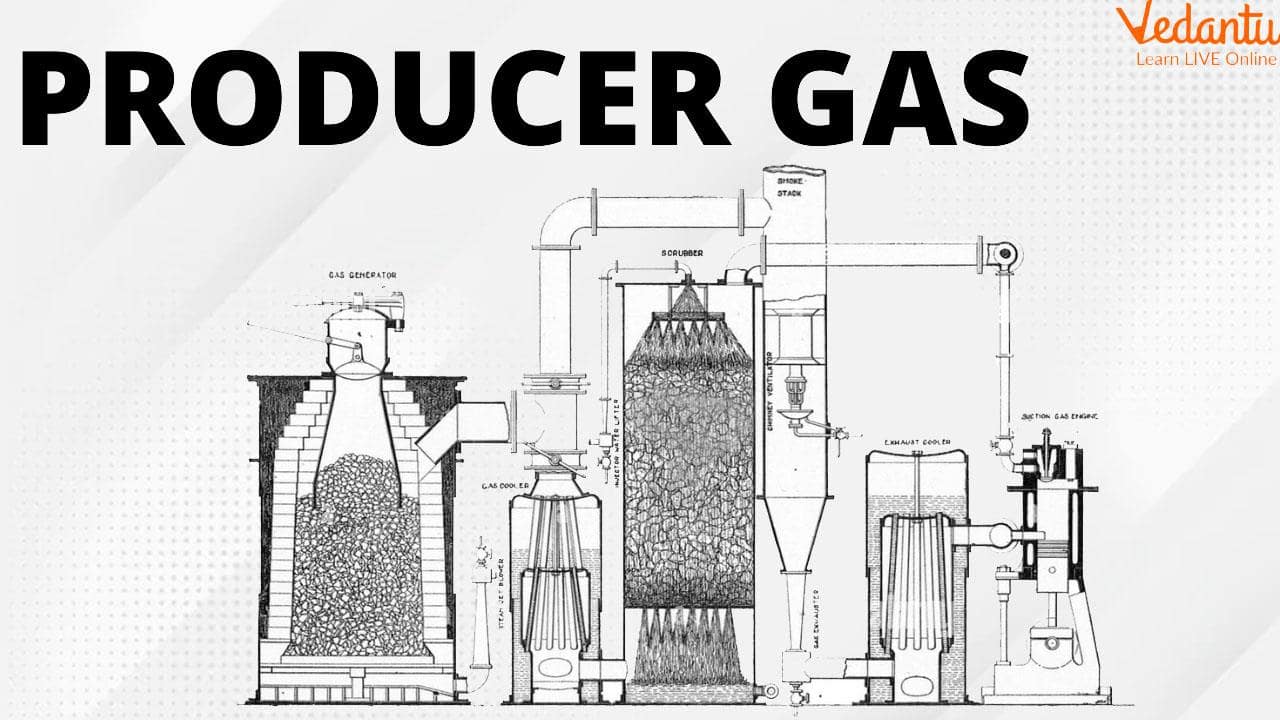




Introduction Producer Gas Uses
Producer gas is a mix of both flammable and nonflammable gases. The flammable gases are mostly carbon monoxide and hydrogen, while the non flammable gases are mainly carbon dioxide and nitrogen. It burns at a lower temperature than some other gases, but its main advantage is that it is easy and cheap to make. It is also called air gas or coal gas sometimes.
What is Producer Gas?

Producer Gas Defined
Producer gas is a type of fuel gas made from things like coal. The producer gets gas from a mixture of nitrogen, carbon monoxide, and hydrogen that can be burned. As coke or coal burns in a furnace, air with steam is blown over it. This makes producer gas, which is used as a fuel.
Usually called "air gas." Producer gas is one type of fuel gas. Producer gas is made with the help of coal. Nitrogen, carbon monoxide, and hydrogen gas are all parts of producer gas.
Producer Gas Uses
The uses of producer gas uses are as follows:
Industry - At the beginning of the 20th century, Producer Gas was used in factories because it was a reliable gas that burned at the same temperature every time. It can be used in industrial kilns, heating, reheating, and heat treatment furnaces like steel mills. Producer Gas can also be used in factories that melt aluminum, copper, and galvanize zinc.
Engines - Producer Gas can be used instead of diesel fuel in machines that use internal combustion. By lowering the compression ratio and adding a spark ignition system, diesel engines can be changed to run on Producer Gas. A dual-fuel system can also power diesel engines. In this case, the motor gets some of its energy from making gas and the rest from diesel, which lights the gas and air mixture that can catch fire.
Miscellaneous - Producer Hot-air generators, used to make things like fertilizer and cement, can be powered by gas. It can also be used in several industrial ways to heat water. Another benefit is that it can melt glass, which can be used to make things. It can also be used to heat bakers' ovens and dry out vegetables and seeds in businesses that deal with food.
Composition of Producer Gas
Methane Gas, Carbon Dioxide Gas, Nitrogen Gas, Hydrogen Sulfide Gas, and Hydrogen Gas are the parts that makeup BioGas.
Methane Gas = About 50% to 70%
Carbon dioxide = about 30% to 40%
Hydrogen Gas = Just a little bit
Hydrogen Sulfide Gas = In small quantities
Small amounts of nitrogen gas
Conclusion
Natural gas is pumped from Texas and Louisiana oil fields to much of the U.S. This company's expansion began about 1945. Natural Gas provided about one-third of the country's energy needs in 1967, but production rates are dropping.
Demand established during periods of plenty can now only be fulfilled by importing similar Gas from Canada and Mexico, with the prospect of future sea-borne liquefied Gas imports. Since 1950, natural gas has been intensively exploited in Europe's Po Valley. 1960: It supplied 10% of Italy's energy.
FAQs on Producer Gas Uses
1. How do gas producers make gas?
Producer gas is made by sending steam over red-hot coke without any air in between. Coke is a carbon-based substance caused by heating coal without air. Carbon from the coke and hydrogen from the steam combine to make carbon monoxide and hydrogen gas. The main thing that makes up producer gas is carbon monoxide.
2. How is natural gas used to produce energy?
Gas is a fossil fuel that can be used to generate electricity. When we burn gas, we make heat that turns a turbine. When this turbine spins, it turns a generator that produces electricity.
3. What is natural gas?
Natural gas is a fuel made of fossils. Forming a fossil fuel is a natural process that takes millions of years. What happens is that dead plants and animals build up layers over the ground as they break down. Over time, rocks, dirt, sand, and silt cover the organic matter.









